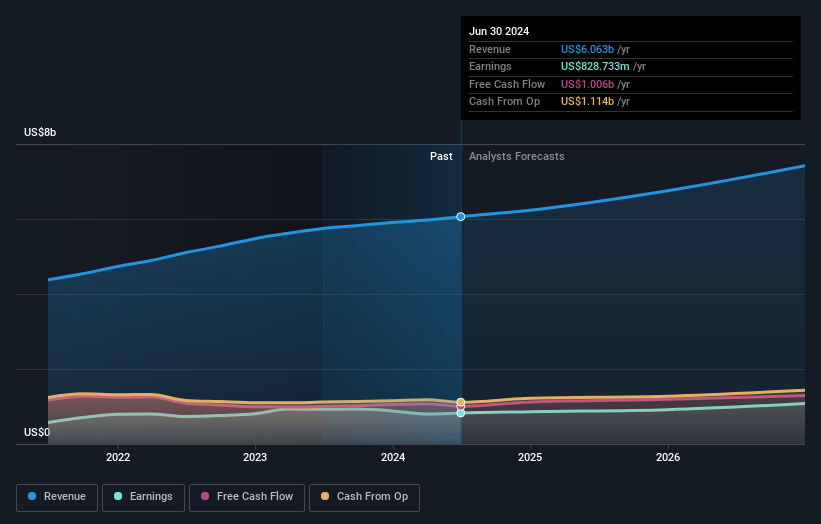Gartner, Inc. (NYSE:IT) saw a decent share price growth of 19% on the NYSE over the last few months. The company is now trading at yearly-high levels following the recent surge in its share price. As a large-cap stock with high coverage by analysts, you could assume any recent changes in the company’s outlook is already priced into the stock. But what if there is still an opportunity to buy? Today we will analyse the most recent data on Gartner’s outlook and valuation to see if the opportunity still exists.
See our latest analysis for Gartner
What Is Gartner Worth?
According to our valuation model, the stock is currently overvalued by about 39%, trading at US$531 compared to our intrinsic value of $381.42. This means that the buying opportunity has probably disappeared for now. But, is there another opportunity to buy low in the future? Given that Gartner’s share is fairly volatile (i.e. its price movements are magnified relative to the rest of the market) this could mean the price can sink lower, giving us another chance to buy in the future. This is based on its high beta, which is a good indicator for share price volatility.
Can we expect growth from Gartner?

Investors looking for growth in their portfolio may want to consider the prospects of a company before buying its shares. Although value investors would argue that it’s the intrinsic value relative to the price that matter the most, a more compelling investment thesis would be high growth potential at a cheap price. Gartner's earnings over the next few years are expected to increase by 42%, indicating a highly optimistic future ahead. This should lead to more robust cash flows, feeding into a higher share value.
What This Means For You
Are you a shareholder? IT’s optimistic future growth appears to have been factored into the current share price, with shares trading above its fair value. However, this brings up another question – is now the right time to sell? If you believe IT should trade below its current price, selling high and buying it back up again when its price falls towards its real value can be profitable. But before you make this decision, take a look at whether its fundamentals have changed.
Are you a potential investor? If you’ve been keeping tabs on IT for some time, now may not be the best time to enter into the stock. The price has surpassed its true value, which means there’s no upside from mispricing. However, the optimistic prospect is encouraging for IT, which means it’s worth diving deeper into other factors in order to take advantage of the next price drop.
So while earnings quality is important, it's equally important to consider the risks facing Gartner at this point in time. In terms of investment risks, we've identified 2 warning signs with Gartner, and understanding these should be part of your investment process.
If you are no longer interested in Gartner, you can use our free platform to see our list of over 50 other stocks with a high growth potential.
New: Manage All Your Stock Portfolios in One Place
We've created the ultimate portfolio companion for stock investors, and it's free.
• Connect an unlimited number of Portfolios and see your total in one currency
• Be alerted to new Warning Signs or Risks via email or mobile
• Track the Fair Value of your stocks
Have feedback on this article? Concerned about the content? Get in touch with us directly. Alternatively, email editorial-team (at) simplywallst.com.
This article by Simply Wall St is general in nature. We provide commentary based on historical data and analyst forecasts only using an unbiased methodology and our articles are not intended to be financial advice. It does not constitute a recommendation to buy or sell any stock, and does not take account of your objectives, or your financial situation. We aim to bring you long-term focused analysis driven by fundamental data. Note that our analysis may not factor in the latest price-sensitive company announcements or qualitative material. Simply Wall St has no position in any stocks mentioned.
About NYSE:IT
Gartner
Operates as a research and advisory company in the United States, Canada, Europe, the Middle East, Africa, and internationally.
Flawless balance sheet with proven track record.
Similar Companies
Market Insights
Community Narratives




